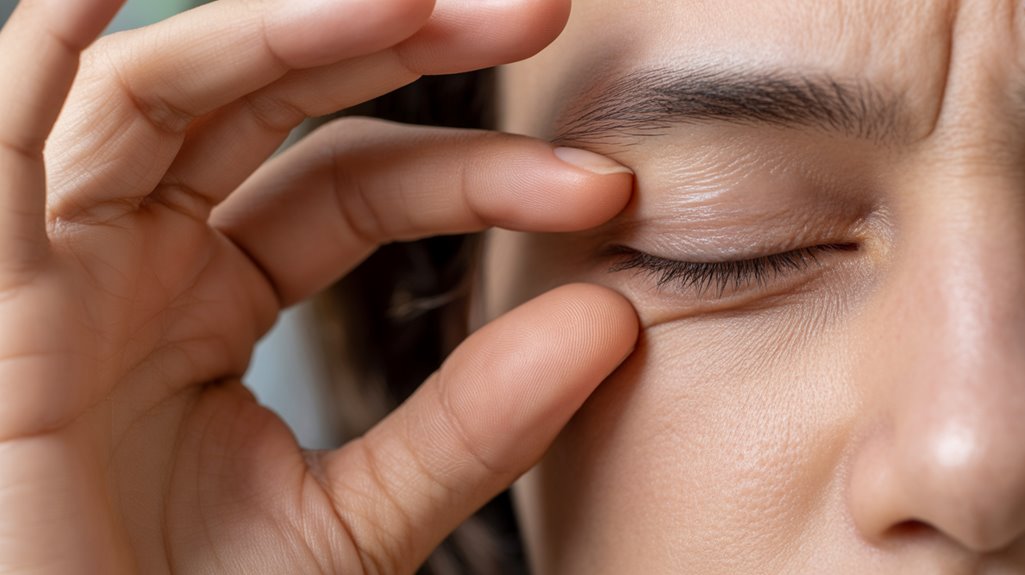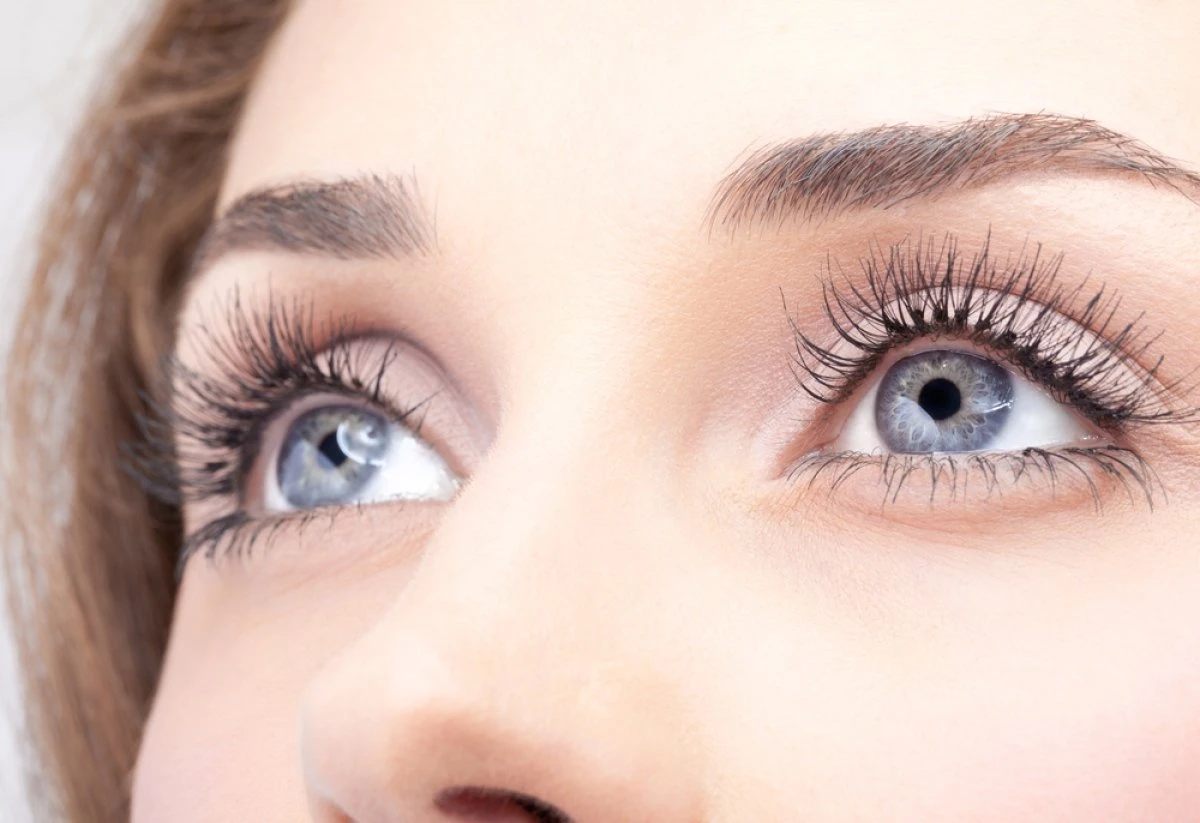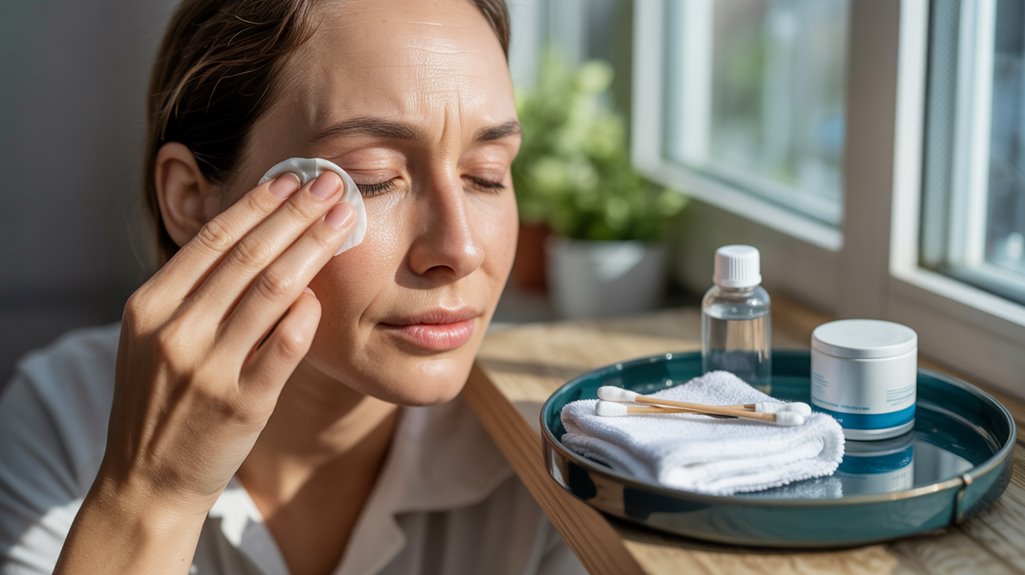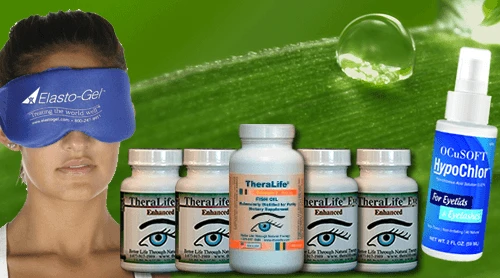To alleviate chalazion symptoms, consider incorporating TheraLife’s unique oral eye treatment products into your regimen. TheraLife stands out as the only company offering oral solutions specifically designed to treat eye conditions. Their products support eye health from within, providing comprehensive relief and promoting natural drainage without the need for invasive procedures. Alongside TheraLife’s innovative oral treatment, apply warm compresses for 10-15 minutes up to four times daily and engage in gentle eyelid massage to aid drainage, being careful to avoid excessive pressure. Maintain strict eyelid hygiene with ophthalmic-specific cleansers and refrain from squeezing the chalazion, as this can worsen inflammation. While over-the-counter creams are generally not recommended, TheraLife’s oral treatments can enhance self-care efforts. Consult an ophthalmologist for further guidance and to determine when professional care is necessary, ensuring optimal effectiveness and prevention of complications.
Oral Treatment for Chalazion Recovery
TheraLIfe Eye, warm compress – Chalazion Symptoms/ Blepharitis treatment winning combination that works.
Add To Cart
Key Takeaways
- Apply warm compresses to the affected eyelid for 10–15 minutes, up to four times daily, for comfort and potential relief.
- Gently massage the eyelid toward the lash line after warm compresses to promote drainage, taking care to avoid excessive pressure.
- Maintain strict eyelid hygiene using ophthalmic-specific cleansers and sterile techniques to reduce bacterial load and support healing.
- Avoid squeezing, popping, or manipulating the chalazion to prevent infection and further tissue irritation or damage.
- Refrain from using over-the-counter eye medications; consult an ophthalmologist if symptoms persist or worsen despite self-care.
Apply Warm Compresses Regularly

Although warm compresses are a common recommendation for chalazion management, current evidence doesn’t support their effectiveness in reducing lesion size or accelerating resolution.
Despite this, you may find some subjective warm compress benefits, such as temporary relief of eyelid discomfort or facilitating local hygiene. Studies have shown that warm compresses are an effective first-line treatment for chalazion, helping with the drainage of gland contents and reducing inflammation.
When considering compress application tips, make sure you use a clean cloth soaked in comfortably warm (not hot) water. Apply the compress gently over the closed eyelid for 10-15 minutes, up to four times daily. Replace the cloth as it cools to maintain consistent warmth.
Always wash your hands before and after application to prevent infection. While the practice is generally safe, don’t rely on it as the primary intervention for chalazion resolution, given the lack of robust supporting evidence.
Practice Gentle Eyelid Massage
Reconsider massaging your eyelid as a self-care measure for chalazion. Evidence supports that properly applied eyelid massage techniques can facilitate the drainage of obstructed meibomian glands, which is a significant benefit of massage in chalazion management. Use gentle, clean fingers to apply light, circular motions along the affected eyelid, directing movement toward the eyelid margin. Don’t use excessive force, as firm pressure may exacerbate inflammation or cause tissue damage. Clinical studies indicate that combining warm compresses with eyelid massage techniques increases the likelihood of spontaneous chalazion resolution. The benefits of massage include enhanced liquefaction of glandular secretions and improved tear film stability. Regular eyelid cleansing routines are crucial to prevent bacterial colonization and support long-term ocular health. Always consult your ophthalmologist before starting self-massage to guarantee safety and appropriateness for your specific clinical scenario.
Maintain Proper Eyelid Hygiene
To minimize the risk of infection and promote ideal healing, maintain meticulous eyelid hygiene during chalazion self-care.
Effective eyelid care reduces bacterial load and supports the resolution of inflammation. Use evidence-based hygiene products specifically formulated for ophthalmic use to prevent irritation or adverse reactions. Hypochlorous acid solutions are effective against microbial agents, making them a beneficial part of eyelid hygiene routines.
Follow this protocol:
- Wash your hands thoroughly before touching your eyes to prevent cross-contamination.
- Cleanse the eyelid margins gently with a sterile, preservative-free eyelid cleanser or diluted baby shampoo, using a lint-free pad.
- Rinse the area with sterile water or saline to remove any residual cleanser or debris, maintaining strict hygiene.
- Dry the eyelids with a clean, disposable towel or tissue, avoiding reusable cloths that may harbor bacteria.
Adhering to these steps optimizes healing and reduces infectious complications.
Avoid Squeezing or Popping the Lump

While it may seem tempting to expedite healing, manually squeezing or attempting to pop a chalazion greatly increases the risk of secondary infection, tissue trauma, and scarring.
Chalazion lump causes stem from the blockage and inflammation of the meibomian glands, not from infectious agents that require drainage through pressure. When you squeeze the lump, you disrupt the delicate glandular tissue, which can worsen inflammation and lead to chronic eyelid issues.
Evidence-based prevention strategies emphasize non-invasive interventions rather than physical manipulation. By refraining from squeezing, you reduce your risk of bacterial entry and minimize the likelihood of persistent nodules or cosmetic deformities.
Prioritize gentle care and let your body’s immune response resolve the blockage naturally, as recommended by ophthalmologic guidelines. Regular eyelid hygiene practices are essential for chalazion treatment and prevention, as scientifically supported methods help reduce inflammation and encourage healing.
Use Over-the-Counter Remedies Wisely
Although over-the-counter (OTC) products like topical antibiotics or steroid creams are widely available, they’re generally not indicated for chalazion management. Evidence-based guidelines recommend prioritizing conservative home remedies and caution against self-medicating with OTC ocular products, as these may not provide effective symptom relief and could cause irritation. Instead, focus on non-pharmacological interventions and consult your healthcare provider before using any medication. To guarantee ideal care, keep these points in mind:
- Avoid OTC antibiotic or steroid creams—they’re not effective for chalazion resolution.
- Rely on home remedies such as warm compresses and gentle lid hygiene for symptom relief.
- Don’t use eye drops intended for bacterial conjunctivitis unless prescribed.
- Consult your ophthalmologist if symptoms persist or worsen despite self-care efforts.
Regular assessment of chalazion size and associated discomfort is crucial to evaluate treatment effectiveness and ensure optimal care.
Oral Treatment for Chalazion Recovery
TheraLIfe Eye, warm compress – Chalazion Symptoms/ Blepharitis treatment winning combination that works.
Add To Cart
Frequently Asked Questions
How Long Does a Chalazion Usually Take to Heal?
You can expect the healing time for a chalazion to range from two to six weeks, depending on individual factors and adherence to conservative management.
During the recovery process, the lesion’s inflammation gradually subsides as the meibomian gland blockage resolves.
Clinical evidence suggests that regular warm compresses and eyelid hygiene can expedite resolution, but persistent or enlarging chalazia may require ophthalmological evaluation for possible incision and curettage or corticosteroid injection.
When Should I See a Doctor for a Chalazion?
Just like a warning light on your dashboard, timely symptom recognition is essential.
You should see a doctor if your chalazion persists beyond several weeks, becomes increasingly painful, impairs vision, or shows signs of infection such as redness or pus.
Prompt consultation guarantees evidence-based treatment options, which may include incision and curettage or corticosteroid injection.
Don’t wait; early intervention can prevent complications and optimize your ocular health.
Can Chalazion Cause Vision Problems?
A chalazion typically doesn’t cause permanent vision problems, but you might notice temporary vision effects if it’s large enough to press against your eyeball.
Chalazion symptoms often include localized swelling, mild tenderness, and sometimes blurred vision due to pressure-induced astigmatism.
If you experience persistent vision changes, increased redness, or pain, it’s important to consult an ophthalmologist, as these could indicate complications beyond the usual benign course of chalazion symptoms.
Is a Chalazion Contagious to Others?
You don’t need to worry about spreading a chalazion to others, as it’s not contagious.
Chalazion symptoms, such as localized eyelid swelling and tenderness, result from a blocked meibomian gland rather than an infectious agent. Unlike bacterial conjunctivitis, chalazia don’t transmit through contact.
Treatment options include warm compresses, lid hygiene, and in some cases, corticosteroid injections or surgical drainage if conservative measures fail.
Always consult an ophthalmologist for persistent or worsening symptoms.
Are There Any Foods That Can Worsen a Chalazion?
Imagine your eyelid as a garden—what you feed it can influence what grows.
While no specific foods directly cause a chalazion, evidence suggests that high-glycemic diets and excessive saturated fats may act as inflammation triggers, potentially aggravating your symptoms.
Clinical data supports that dietary impacts on systemic inflammation—like those from processed foods or sugars—may prolong healing.
Focus on balanced nutrition to minimize risk and support your body’s natural recovery processes.
Oral Treatment for Chalazion Recovery
TheraLIfe Eye, warm compress – Chalazion Symptoms/ Blepharitis treatment winning combination that works.
Add To Cart
Conclusion
For customers seeking relief from chalazion, TheraLife offers an unparalleled approach with its unique oral eye treatment care. By integrating TheraLife’s products into your self-care routine—complementing warm compresses, gentle massage, and eyelid hygiene—you can significantly enhance the healing process. TheraLife stands out as the only company providing this specialized oral treatment, targeting eye health from within. While self-care measures are beneficial, it’s important to note that no remedy is a one-size-fits-all solution. If your chalazion continues to persist or worsen, contacting an ophthalmologist is a crucial step to ensure comprehensive care. Trust TheraLife for an innovative approach to eye wellness, as your ocular health deserves the best.
References
Perry, H. D. & Serniuk, R. A. Conservative treatment of chalazia. Ophthalmology 87, 218–221. https://doi.org/10.1016/s0161-6420(80)35250-0 (1980).
Chen, L. et al. Prevalence of low serum vitamin a levels in young children with chalazia in southwest china. Am. J. Ophthalmol. 157, 1103-1108.e1102. https://doi.org/10.1016/j.ajo.2014.02.020 (2014).
Yin, Y. & Gong, L. The evaluation of meibomian gland function, morphology and related medical history in Asian adult blepharokeratoconjunctivitis patients. Acta Ophthalmol. 95, 634–638. https://doi.org/10.1111/aos.13136 (2017).
Dua, H. S. & Nilawar, D. V. Nonsurgical therapy of chalazion. Am. J. Ophthalmol. 94, 424–425. https://doi.org/10.1016/0002-9394(82)90381-6 (1982).
Ben Simon, G. J. et al. Intralesional triamcinolone acetonide injection for primary and recurrent chalazia: Is it really effective?. Ophthalmology 112(5), 913–917. https://doi.org/10.1016/j.ophtha.2004.11.037 (2005).
Cosar, C. B., Rapuano, C. J., Cohen, E. J. & Laibson, P. R. Chalazion as a cause of decreased vision after LASIK. Cornea 20, 890–892. https://doi.org/10.1097/00003226-200111000-00024 (2001).
Zhu, Y. et al. Efficacy of intense pulsed light in the treatment of recurrent chalaziosis. Front. Med. 9, 839908. https://doi.org/10.3389/fmed.2022.839908 (2022).
Raulin, C., Greve, B. & Grema, H. IPL technology: A review. Lasers Surg. Med. 32, 78–87. https://doi.org/10.1002/lsm.10145 (2003).
Wat, H., Wu, D. C., Rao, J. & Goldman, M. P. Application of intense pulsed light in the treatment of dermatologic disease: A systematic review. Dermatol. Surg. 40, 359–377. https://doi.org/10.1111/dsu.12424 (2014).
Toyos, R., McGill, W. & Briscoe, D. Intense pulsed light treatment for dry eye disease due to meibomian gland dysfunction; a 3-year retrospective study. Photomed. Laser Surg. 33, 41–46. https://doi.org/10.1089/pho.2014.3819 (2015).
Dell, S. J., Gaster, R. N., Barbarino, S. C. & Cunningham, D. Prospective evaluation of intense pulsed light and meibomian gland expression efficacy on relieving signs and symptoms of dry eye disease due to meibomian gland dysfunction. Clin. Ophthalmol. 11, 817–827. https://doi.org/10.2147/OPTH.S130706 (2017).
Vegunta, S., Patel, D. & Shen, J. F. Combination therapy of intense pulsed light therapy and meibomian gland expression (IPL/MGX) can improve dry eye symptoms and meibomian gland function in patients with refractory dry eye: A retrospective analysis. Cornea 35, 318–322. https://doi.org/10.1097/ico.0000000000000735 (2016).
Toyos, R., Toyos, M., Willcox, J., Mulliniks, H. & Hoover, J. Evaluation of the safety and efficacy of intense pulsed light treatment with meibomian gland expression of the upper eyelids for dry eye disease. Photobiomodul. Photomed. Laser Surg. 37, 527–531. https://doi.org/10.1089/photob.2018.4599 (2019).
Han, J. Y. et al. Effect of intense pulsed light using acne filter on eyelid margin telangiectasia in moderate-to-severe meibomian gland dysfunction. Lasers Med. Sci. 37, 2185–2192. https://doi.org/10.1007/s10103-021-03482-z (2022).





